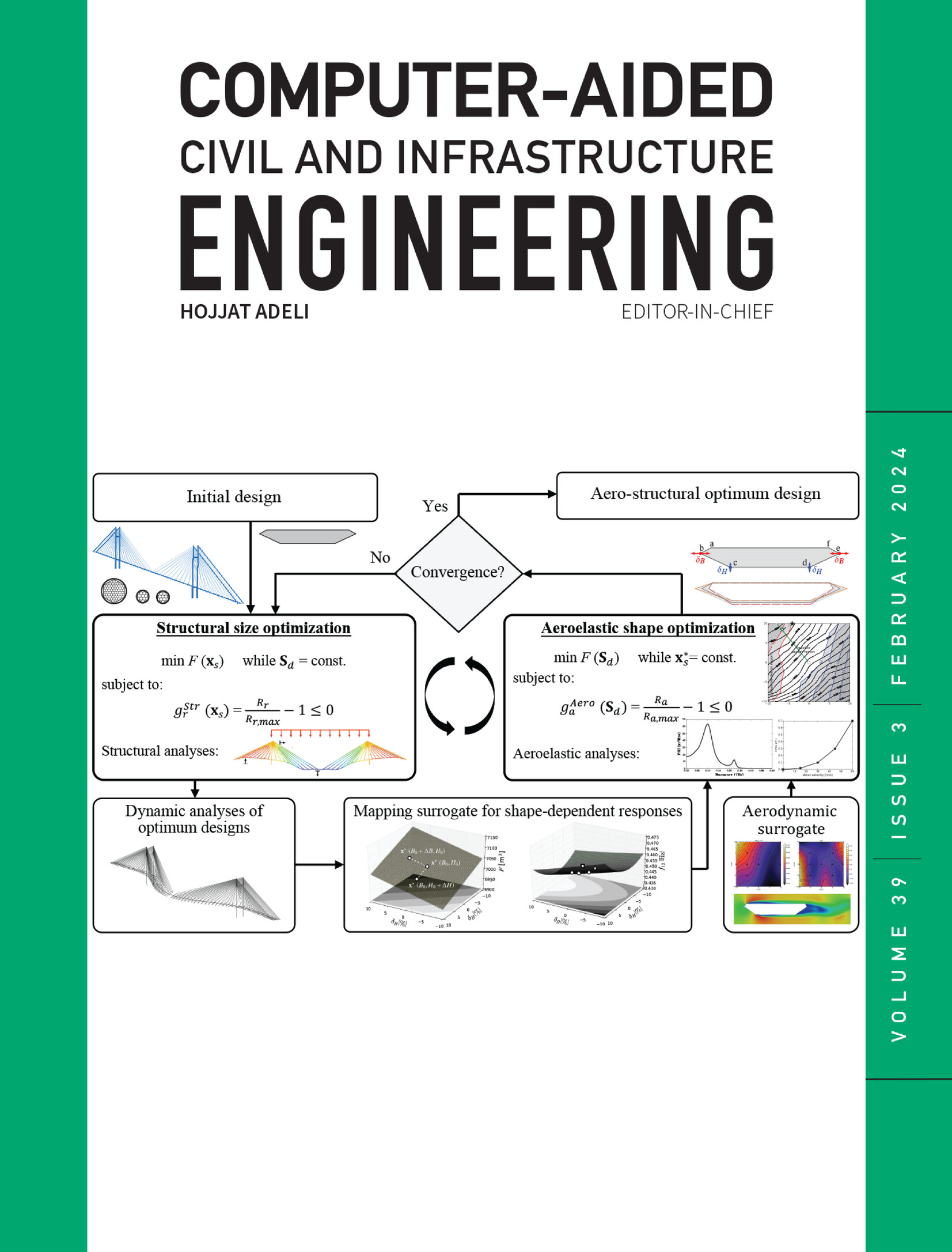Tunnel lining segmentation from ground-penetrating radar images using advanced single- and two-stage object detection and segmentation models
IF 8.5
1区 工程技术
Q1 COMPUTER SCIENCE, INTERDISCIPLINARY APPLICATIONS
引用次数: 0
Abstract
Recent advances in deep learning have enabled automated ground-penetrating radar (GPR) image analysis, particularly through two-stage models like mask region-based convolutional neural (Mask R-CNN) and single-stage models like you only look once (YOLO), which are two mainstream approaches for object detection and segmentation tasks. Despite their potential, the limited comparative analysis of these methods obscures the optimal model selection for practical field applications in tunnel lining inspection. This study addresses this gap by evaluating the performance of Mask R-CNN and YOLOv8 for tunnel lining detection and segmentation in GPR images. Both models are trained using the labeled GPR image datasets for tunnel lining and evaluate their prediction accuracy and consistency based on the intersection over union (IoU) metric. The results show that Mask R-CNN with ResNeXt backbone achieves superior segmentation accuracy with an average IoU of 0.973, while YOLOv8 attains an IoU of 0.894 with higher variability in prediction accuracy and occasional failures in detection. However, YOLOv8 offers faster processing times in terms of training and inference. It appears Mask R-CNN still excels in accuracy in tunnel GPR lining detection, although recent advancements of the YOLOs often outperform the accuracy of the Mask R-CNN in a few specific tasks. We also show that ResNeXt-enhanced Mask R-CNN further improves the accuracy of the traditional ResNet-based Mask R-CNN. The research finding offers useful insights into the trade-offs between the accuracy, consistency, and computational efficiency of the two mainstream models for the tunnel lining identification task in GPR images. The finding is expected to offer guidance for the future selection and development of optimal deep learning-based inspection models for practical field applications.利用先进的单阶段和两阶段目标检测和分割模型从探地雷达图像中分割隧道衬砌
深度学习的最新进展使探地雷达(GPR)图像自动分析成为可能,特别是通过两阶段模型,如基于掩模区域的卷积神经(mask R-CNN)和单阶段模型,如你只看一次(YOLO),这是目标检测和分割任务的两种主流方法。尽管这些方法具有很大的潜力,但对这些方法进行的有限的比较分析模糊了在实际现场应用中隧道衬砌检测的最佳模型选择。本研究通过评估掩模R-CNN和YOLOv8在GPR图像中隧道衬砌检测和分割方面的性能来解决这一问题。使用标记的隧道衬砌GPR图像数据集对两种模型进行训练,并基于IoU (intersection over union)度量评估其预测精度和一致性。结果表明,使用ResNeXt主干的Mask R-CNN分割精度较高,平均IoU为0.973,而使用YOLOv8的IoU为0.894,预测精度变化较大,偶尔会出现检测失败。然而,YOLOv8在训练和推理方面提供了更快的处理时间。在隧道探地雷达衬里探测中,尽管近年来yolo的进步往往在一些特定任务中优于掩模R-CNN,但掩模R-CNN在精度方面仍然表现出色。我们还表明,resnext增强的Mask R-CNN进一步提高了传统的基于resnet的Mask R-CNN的准确性。研究结果对两种主流模型在探地雷达图像中隧道衬砌识别任务的准确性、一致性和计算效率之间的权衡提供了有益的见解。这一发现有望为未来选择和开发用于实际现场应用的最佳深度学习检测模型提供指导。
本文章由计算机程序翻译,如有差异,请以英文原文为准。
求助全文
约1分钟内获得全文
求助全文
来源期刊
CiteScore
17.60
自引率
19.80%
发文量
146
审稿时长
1 months
期刊介绍:
Computer-Aided Civil and Infrastructure Engineering stands as a scholarly, peer-reviewed archival journal, serving as a vital link between advancements in computer technology and civil and infrastructure engineering. The journal serves as a distinctive platform for the publication of original articles, spotlighting novel computational techniques and inventive applications of computers. Specifically, it concentrates on recent progress in computer and information technologies, fostering the development and application of emerging computing paradigms.
Encompassing a broad scope, the journal addresses bridge, construction, environmental, highway, geotechnical, structural, transportation, and water resources engineering. It extends its reach to the management of infrastructure systems, covering domains such as highways, bridges, pavements, airports, and utilities. The journal delves into areas like artificial intelligence, cognitive modeling, concurrent engineering, database management, distributed computing, evolutionary computing, fuzzy logic, genetic algorithms, geometric modeling, internet-based technologies, knowledge discovery and engineering, machine learning, mobile computing, multimedia technologies, networking, neural network computing, optimization and search, parallel processing, robotics, smart structures, software engineering, virtual reality, and visualization techniques.

 求助内容:
求助内容: 应助结果提醒方式:
应助结果提醒方式:


